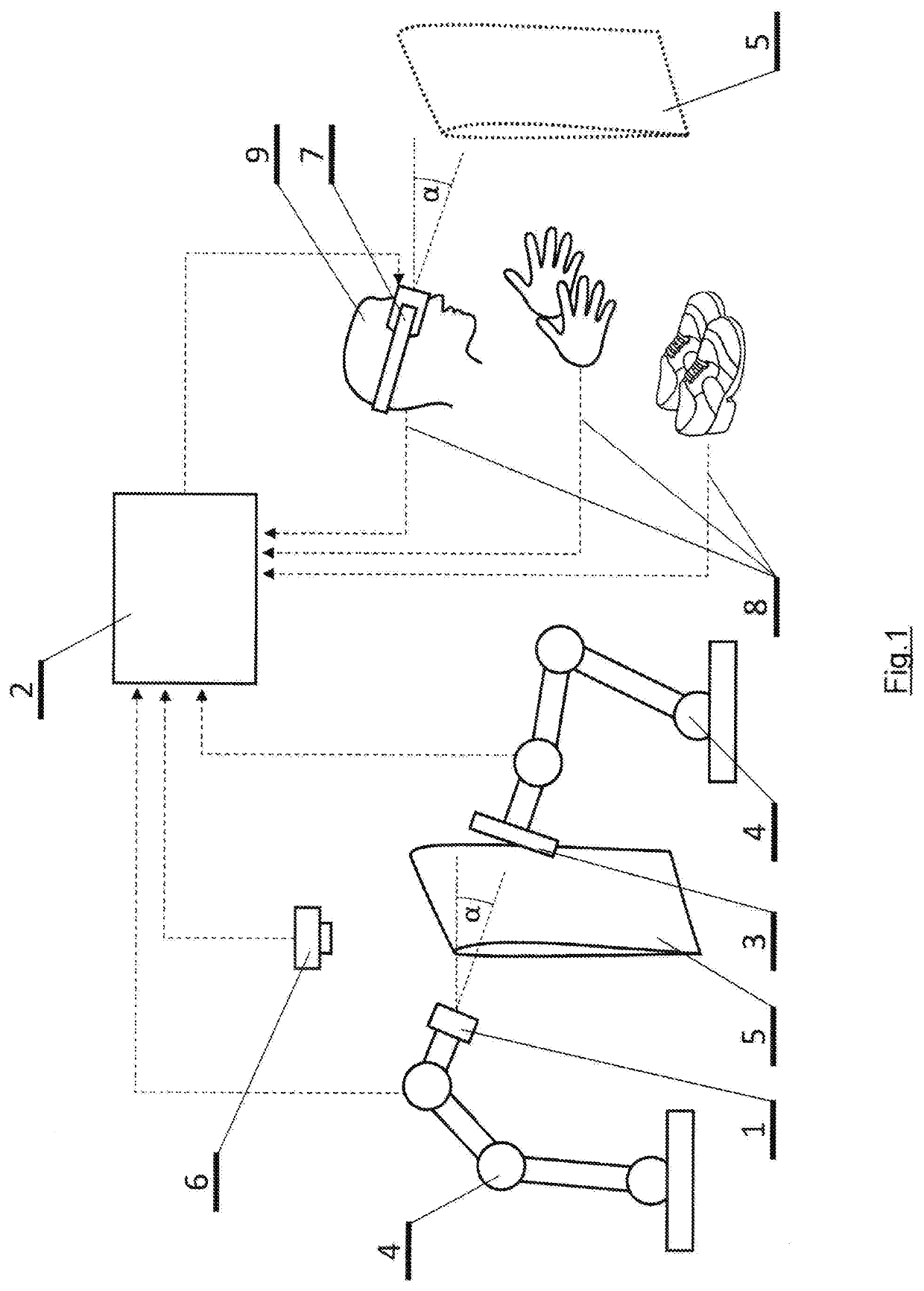Method of non-destructive imaging of the internal structure and device for carrying out the method
- Summary
- Abstract
- Description
- Claims
- Application Information
AI Technical Summary
Benefits of technology
Problems solved by technology
Method used
Image
Examples
Embodiment Construction
[0040]It shall be understood that the specific cases of the invention embodiments described and depicted below are provided for illustration only and do not limit the invention to the examples provided here. Those skilled in the art will find or, based on routine experiment, will be able to provide a greater or lesser number of equivalents to the specific embodiments of the invention which are described here. Also such equivalents will be included in the scope of the following claims.
[0041]FIG. 1 shows the source of radiation 1 fixed to the robotic arm 4. In this particular embodiment of the invention, the source 1 of radiation may be the electrically powered X-ray tube, but in other examples of embodiment of the invention, the source 1 of radiation may be, for example, the radioactive isotope, ultrasound generator, etc. An expert in the field of forms of penetrating energy will be able to select other alternatives for the source 1 of radiation that can be used for imaging the inter...
PUM
 Login to View More
Login to View More Abstract
Description
Claims
Application Information
 Login to View More
Login to View More - R&D
- Intellectual Property
- Life Sciences
- Materials
- Tech Scout
- Unparalleled Data Quality
- Higher Quality Content
- 60% Fewer Hallucinations
Browse by: Latest US Patents, China's latest patents, Technical Efficacy Thesaurus, Application Domain, Technology Topic, Popular Technical Reports.
© 2025 PatSnap. All rights reserved.Legal|Privacy policy|Modern Slavery Act Transparency Statement|Sitemap|About US| Contact US: help@patsnap.com

